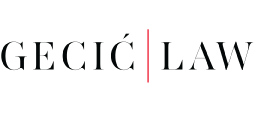Serbia is experiencing positive economic growth driven by strong foreign direct investments, while developing a growing focus on energy security and the transition to renewable energy sources, according to Gecic Law Partner Hristina Kosec.
“In the second quarter, GDP has shown a positive growth of 1.7% compared to the previous year, and it is projected to increase further to 2.3%,” Kosec begins. “Estimates suggest that 2023 may end showing improved economic conditions, although this outcome is uncertain due to factors such as inflation, the situation in the EU due to Ukraine, and increased prices of electricity and heating.”
According to Kosec, a key development is that “from October 1, the transitional period for the EU’s new CBAM regulation begins and extends until 2026. This will affect EU exports in several industry sectors, especially iron and steel, constituting approximately 1% of our GDP. Consequently, important decisions regarding this and other affected sectors must be promptly addressed.”
Kosec emphasizes that FDIs “have had a significant impact, with an impressive EUR 4.1 billion in investments last year, and we expect a similar figure this year due to factors like skilled labor, incentives, and land availability. Serbia has become an attractive destination for investors due to its favorable incentive schemes, including tax benefits and employment-related advantages. We’ve also recently streamlined procedures with changes in immigration laws to encourage the migration of qualified workers, offering simplified permits and easier entry conditions for specific groups like students and researchers. These changes enhance our labor market and economic competitiveness.” According to Kosec, the Open Balkan Initiative will also likely enhance the flexible movement of goods and labor within the region.
Other noteworthy updates, according to Kosec, include adjustments to those incentives that impact FDI. “The thresholds for these incentives in the manufacturing sector have been slightly raised, from EUR 300,000 to 500,000,” she says. “Additionally, there is a concerted effort to promote investments in regions beyond Belgrade, specifically underdeveloped areas, particularly in southern Serbia. These incentives can potentially reach up to EUR 5,000 per employee or job created, primarily fostering job growth and industrial development in these regions.”
“Previously, real estate regulations also posed challenges for foreign investors due to complicated land acquisition and building permission processes,” Kosec adds. “However, with recent changes came a simplified procedure – having a use permit easily translates to ownership, reducing risks and speeding up transactions.”
Regarding energy, Kosec notes that the production is stable, although the country still relies heavily on coal. “In line with the EU goals, the target is to achieve more than 40% renewable energy by 2040,” she says. “To work toward this goal, we introduced a package of energy acts in 2021 and, this year, a new one aimed at addressing grid balancing issues.”
“One of the challenges facing the energy sector is insufficient storage capacity, which can be quite expensive to develop,” Kosec further notes. “Consequently, the government is actively seeking strategic partners for the construction of five new solar plants, with a total capacity of 1,000 megawatts AC and dedicated storage facilities. This underscores the increasing complexity of energy projects and the growing interest from foreign investors. Additionally, to enhance energy security, we are engaged in natural gas storage agreements with Hungary, with the hope that the improved autumn weather will enhance our preparations for the winter.”


